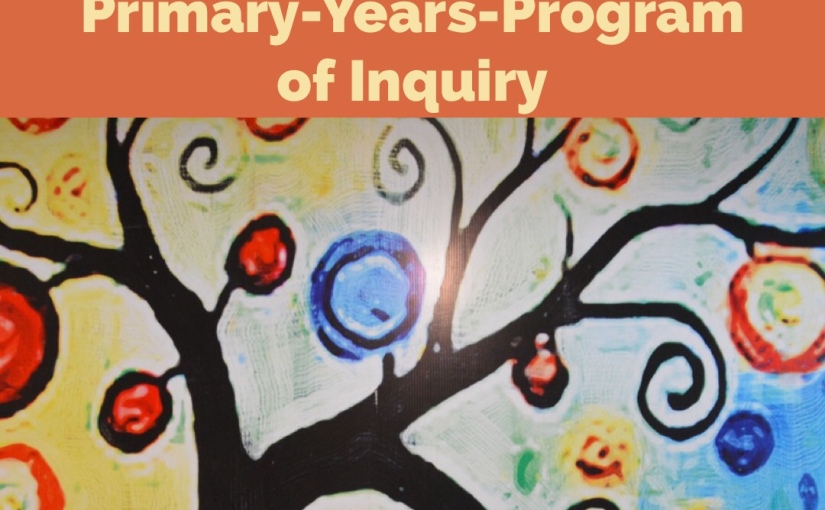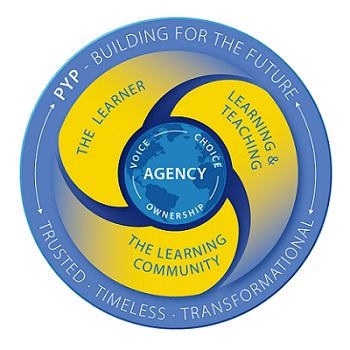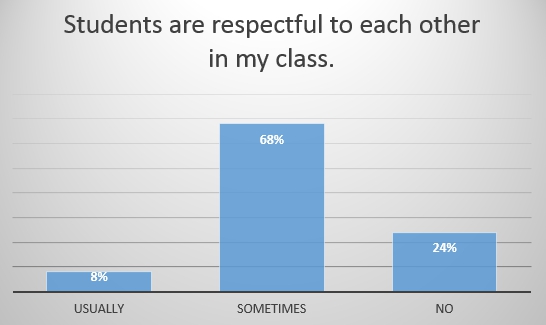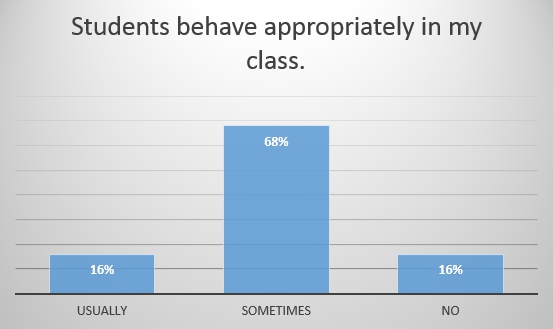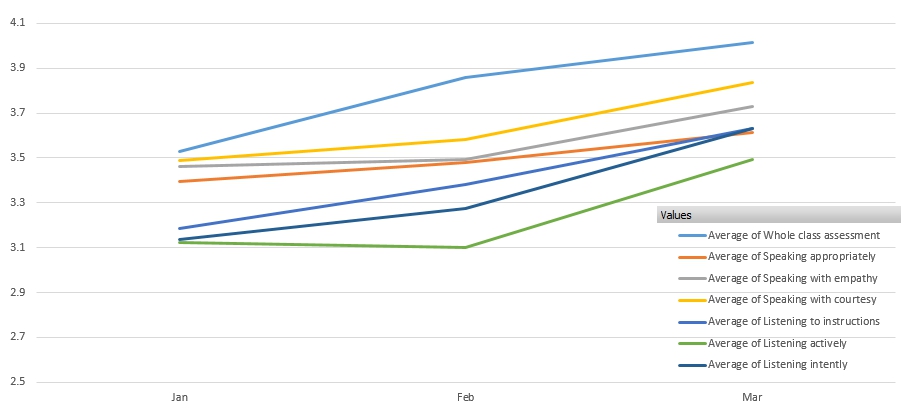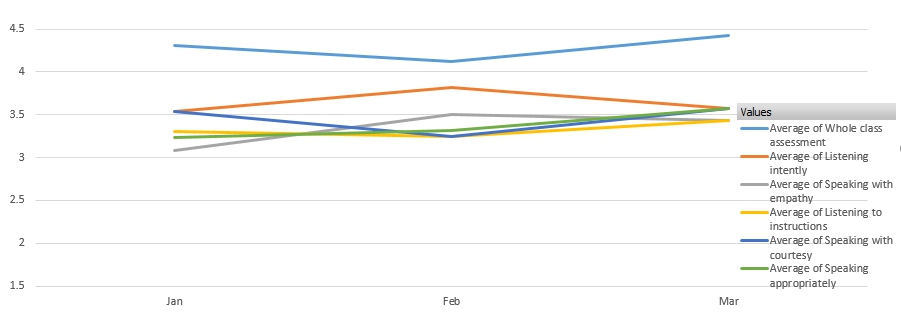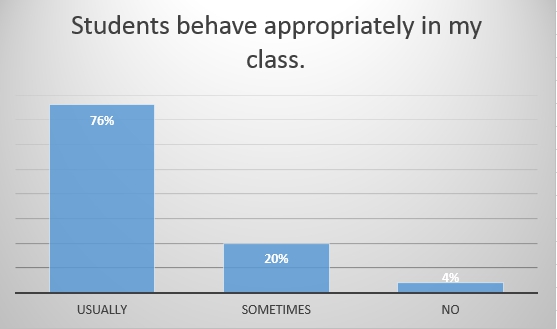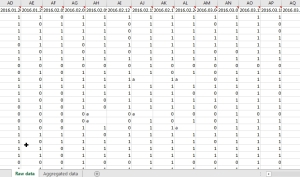In What is a Coherent Curriculum? (1995), James Beane describes how “the self-contained classrooms in many elementary schools only thinly disguise a day divided into subject or skill time slots.” Many PYP schools divide the day into the same fragmented patchwork that plagues secondary schools “whose boundaries are virtually etched in stone by schedules, teacher loyalties, and organizational structures like departments.”
The schedule
From the early years, students at many PYP schools travel through the building according to a rigid timetable which often sees them tackle five different subjects in one day. It gets worse as they advance up the grades and academic demands grow. Homework demands increase to a critical mass to accommodate the vast amount of content mandated by administrators. Everything is boxes: The building is a box. The content standards are in boxes. The timetable is a box.
But why do we do it this way? Wouldn’t it make more sense to focus on one subject area at a time instead of trying to carry on several all at once? How can we make this happen for the children?
The specialists
As the complexity of age-appropriate content increases, it makes sense for teachers who specialize in each discipline to lead the learning in their area of expertise. I admit that I have struggled to curate content and respond to my upper elementary students’ inquiries to maximum effect given their impressive depth of understanding and my limited amount of time and knowledge, particularly in the sciences. If I didn’t have formal training, music would feel impossible to teach meaningfully.
Unfortunately, many PYP schools approach specialists as ‘extra’ instead of ‘essential’. To the students, specialist lessons must feel like a break from ‘regular’ class. This can be positive, but how deep is the learning occurring in those once or twice per week lessons?
When it comes to ‘integration’, the default at many PYP schools is for the specialist teachers to simply do something similar to what is happening in a homeroom unit of inquiry for a period of time, sometimes not even at the same time.
Homeroom perspective
Units of inquiry are highly integrated within my classroom. Often, a single task applies knowledge and practices skills across a range of disciplines including and mostly limited to language arts, mathematics, social studies, and sciences.
Yet at the same time they are being introduced to the foundations of astronomy, biology, geography, and a myriad of other rich disciplines by developing theories around their emerging understandings, they have ostensibly been pursuing similar inquiries with several other specialist teachers in PE, ICT, Japanese language, Visual Art, and Music.
Instead of the unit of inquiry being homeroom-led with enrichment content being sprinkled in here and there, the program of inquiry should be designed around specialist teachers leading entire units of inquiry around which homeroom teachers integrate ‘core’ content.
True depth
For a planned period of time, a class would engage in an in-depth inquiry with a specialist teacher every day for the duration of the unit. Rather than bouncing from class to class every day, they would focus as much as possible on that one inquiry. The role of the homeroom teacher would be to co-teach, coordinate, and supplement the unit with essential humanities and STEAM content.
The possibilities of service-learning and project- and problem-based learning, as well as open-ended inquiry-learning have been documented and proven in schools around the world, but haven’t found their way into many PYP schools.
Musical perspective
When I taught music to seven grades of elementary students, I saw each class twice a week for 45 minutes. From my point of view, it was convenient. Each lesson was quick, and progress occurred slowly over the course of an entire year. It was a challenge to plan so many different lessons each week, but I know the content well and never struggled to make lessons meaningful and engaging.
But when I imagine what we could achieve working with one class for 90 minutes a day, every day, for several weeks, there is no comparison. The depth of learning that could be achieved would vastly overshadow what we did in short weekly sessions during an entire school year. At the completion of each unit, classes would be able to deliver a product that reflects deep understanding.
In music, I imagine each unit concluding with a recital far beyond the typical one or two song “That’s my Barney!” performance featured in the assemblies of many PYP schools. The same thinking could apply to any discipline, and would be infinitely more useful toward developing the PYP Exhibition and MYP personal project.
Further considerations
As with any complete overhaul of a system, there are questions to ask and problems to solve. For example, with Physical Education: While studying art, music, or physics for only six weeks out of the school year might be acceptable or possibly preferable, this is not the case with PE. Children need daily exercise (which most timetables don’t adequately provide, anyway). To this end, my program would include daily 20- to 30-minute fitness periods organized by PE specialist teachers. Unlike lessons, they would be routines that the children quickly learn and practice, collecting data about their fitness and monitoring their progress. PE teachers would also lead units of inquiry, but perhaps 90 minutes per day, every day, would be too much. That goes exactly to the point:
The timetables and pastoral duties need to be flexible. First, this requires a creative and organized coordinator working with a collaborative team of teachers and support staff. Second, it requires the commitment and support of administration and management to begin working with teachers to plan the transformation years in advance. The result of providing a fundamentally coherent curriculum would be worth the time and effort.
